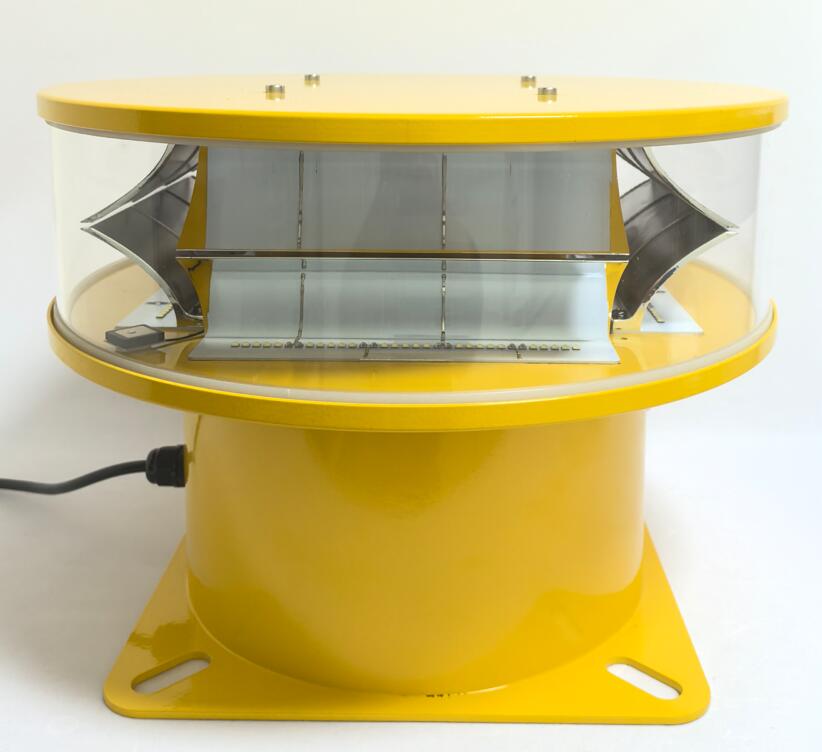Aircraft Warning Lights on Towers: Critical Safeguards for Modern Aviation
As skylines become increasingly crowded with tall structures, aircraft warning lights on towers have emerged as essential safety components in global aviation infrastructure. These specialized lighting systems protect both air traffic and ground structures by marking potential aerial obstructions, ensuring safe navigation for pilots during all weather conditions and times of day.
The Vital Role of Tower Lighting in Aviation Safety
Aircraft warning lights on towers serve three primary safety functions:
Collision Prevention: Provide visible warning of tall structures to pilots
Altitude Awareness: Help aircraft maintain proper elevation in congested airspace

Navigation Assistance: Serve as visual reference points during flight
Modern systems combine advanced lighting technology with smart monitoring to create reliable, maintenance-friendly solutions that meet strict international aviation regulations.
| aircraft warning lights on towers |
Types of Aircraft Warning Light Systems
1. Red Obstruction Lights
Low/medium intensity for structures under 150 meters
Steady-burning or flashing configurations
Most common for urban towers and buildings
| aircraft warning lights on tower |
2. White Strobe Lights
High-intensity flashes for structures exceeding 150 meters
Visible up to 20 nautical miles
Required for telecommunication towers near airports
3. Dual Lighting Systems
Combine red and white lights for maximum visibility
Automatically adjust based on daylight conditions
Ideal for ultra-tall structures (500m+)
4. Solar-Powered Options
Independent power supply for remote locations
Battery backup for continuous operation
Eco-friendly alternative to grid-powered systems
Key Technical Specifications
Modern aircraft warning lights on towers feature:
LED Technology: 50,000+ hour lifespan with minimal power consumption
Smart Controls: Automatic brightness adjustment based on ambient light
Durability: Weatherproof housings withstand extreme temperatures (-40°C to +70°C)
Monitoring: Remote diagnostics and failure alerts via IoT connectivity
Redundancy: Backup power systems ensure uninterrupted operation
International Regulatory Compliance
Aircraft warning lights on towers must meet strict standards:
ICAO Annex 14: Global benchmark for obstruction lighting
FAA AC 70/7460-1L: U.S. requirements for tower marking
EASA Regulations: European aviation safety standards
Local Aviation Authority Rules: Country-specific adaptations
Compliance involves specific requirements for:
Light intensity and color
Flash patterns and frequency
Vertical spacing on structures
Maintenance and inspection protocols
Installation Best Practices
Proper implementation of aircraft warning lights on towers requires:
Site Assessment:
Structure height and location evaluation
Air traffic pattern analysis
Environmental condition considerations
System Design:
Appropriate light type selection
Optimal placement and spacing
Power supply planning
Installation:
Weatherproof electrical connections
Lightning protection integration
Easy maintenance access
Testing & Commissioning:
Day/night visibility verification
Backup system validation
Regulatory compliance certification
Emerging Technologies in Tower Lighting
The future of aircraft warning lights on towers includes:
Adaptive Lighting Systems:
Radar-triggered activation when aircraft approach
Weather-dependent intensity adjustment
Advanced Monitoring:
AI-powered predictive maintenance
Real-time performance analytics
Drone Compatibility:
UAV-specific light frequencies
Integration with UTM systems
Sustainable Solutions:
Solar-hybrid power systems
Energy-harvesting technologies
Special Applications
Beyond traditional towers, these lighting systems protect:
Wind Turbines: Especially in offshore wind farms
Bridge Spans: Marking high suspension cables
Power Lines: Identifying dangerous crossings
Construction Cranes: Temporary obstruction marking
Maintenance and Reliability
Ensuring continuous operation of aircraft warning lights on towers requires:
Regular cleaning of lenses and solar panels
Periodic battery replacement
Scheduled system diagnostics
Immediate repair of detected faults
Modern systems simplify maintenance through:
Modular component design
Tool-free access features
Remote troubleshooting capabilities
A Clear Path for Aviation Safety
Aircraft warning lights on towers represent a critical intersection of aviation safety and urban development. As structures continue reaching new heights and airspace becomes more congested, these lighting systems provide the visible safeguards that prevent catastrophic collisions.
The aviation industry's ongoing technological advancements - from smart LED systems to AI-powered monitoring - ensure that aircraft warning lights on towers will continue evolving to meet tomorrow's safety challenges. For tower operators and aviation authorities alike, investing in high-quality, compliant lighting systems remains non-negotiable for protecting lives and infrastructure in our increasingly vertical world.
